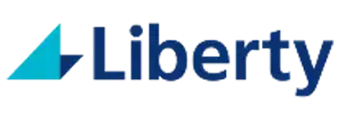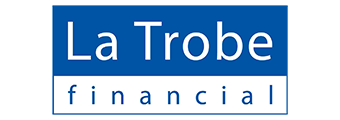Then Labor-leader Bill Shorten said franking credits are a gift from the government and wanted to scrap them.
Franking credits are provided to shareholders that are paid dividends from already taxed profits to ensure company profits are not double-taxed.
Many retirees receive dividends through their self-managed super, with franking credits paid to them as a cash refund by the tax office (rather than as a tax offset) as they earn no employment income.
The SMSF Association at the time estimated it could cut $5,000 in income from the median SMSF retiree earning $50,000 in pension income.
Yannick Ieko, CEO of SMSF Loan Experts, told Savings.com.au that with the current government it is a "wait and see" mentality for retirees.
"I think at the moment, everyone is watching carefully. It certainly looks as though the new government will have a lot on its plate for the foreseeable future - inflation, interest rates, recession, international geopolitics - which may bring any tinkering with this space to the back of the queue," Mr Ieko said.
"While there is certainly scope for improvement, I think most people would sign for stability and predictability so this is not necessarily a bad thing."
Mr Ieko also said there does not seem to be any risk to increasing administration responsibilities of self-managed super funds.
Are SMSF loans in the spotlight?
In the lead up to the 2019 federal election, Labor vowed to reinstate the ban on SMSF loans - which was lifted in 2007 - as recommended by the 2014 Financial Systems Inquiry.
In contrast, the Coalition repeatedly said it would not ban them.
The purchase of property for an SMSF is usually done through what's called a limited recourse borrowing arrangement, or LRBA for short - also known as an SMSF loan.
Introduced in 2007, LRBAs in the event of default limited the lenders' recourse to the value of the asset, rather than the whole fund.
At the end of 2021 there were nearly 602,000 SMSFs encompassing more than 1.1 million members according to ATO data.
Of the $840 billion in total assets held, nearly $66 billion was under an LRBA.
This is up from $27 billion in September 2016.
While SMSF loans or LRBAs seem safe under the new government, Mr Ieko said any changes would substantially impact the SMSF sector.
"As an important growth asset, property forms part of many SMSF wealth management strategies - not just for SMSFs but for many," he said.
"It takes many years for people to plan for their retirement so last minute changes that negatively impact people can cause significant damage."
Current economic environment could prove tough for SMSFs
With the Reserve Bank tipped to increase the cash rate target to 2-point-something by the end of 2023, Mr Ieko said now is a good time to review your SMSF.
This includes reviewing loan interest rates and fees, assessing income and expenses, finding other revenue streams, and reviewing asset allocation.
"For those with self-managed super funds, it is now absolutely critical to act quickly and decisively to protect your fund against the negative impact of the current and further interest rate rises," he said.
“The RBA made it clear when it announced the rise that more rate increases are on the way. It is expected that the cash rate will rise to 1.5% by the end of the year and will reach 2% by mid-next year."
Any significant changes in portfolios or asset performance usually require a review of the SMSF's investment strategy.
The concerns aren't just held in the self-managed super space either.
A survey of 2,000 by super fund Equip found 15% of seniors - 55+ - have delayed their retirement due to Covid.
Equip CEO Scott Cameron said this isn't surprising.
"Purse strings have been tightened due to the rising cost of living and the fallout from COVID," Mr Cameron said.
According to retirement standards, $545,000 is needed to fund a comfortable retirement.
However more than a third (36%) of survey respondents estimated an individual needs $750,000.
"Many Australians are grossly misjudging how much they need in their reserve to retire, which is likely causing additional – and perhaps unnecessary stress," Mr Cameron said.
"Small steps now, such as making voluntary contributions into your super if you have disposable income, can have a huge pay off down the line."
Advertisement
Looking to take control of your retirement? This table below features SMSF loans with some of the most competitive interest rates on the market.
| Lender | Home Loan | Interest Rate | Comparison Rate* | Monthly Repayment | Repayment type | Rate Type | Offset | Redraw | Ongoing Fees | Upfront Fees | Max LVR | Lump Sum Repayment | Extra Repayments | Split Loan Option | Tags | Features | Link | Compare | Promoted Product | Disclosure |
|---|---|---|---|---|---|---|---|---|---|---|---|---|---|---|---|---|---|---|---|---|
6.49% p.a. | 6.51% p.a. | $3,157 | Principal & Interest | Variable | $null | $230 | 70% |
| Promoted | Disclosure | ||||||||||
6.74% p.a. | 6.79% p.a. | $3,240 | Principal & Interest | Variable | $0 | $220 | 70% | Disclosure | ||||||||||||
6.75% p.a. | 7.16% p.a. | $3,243 | Principal & Interest | Variable | $30 | $null | 80% | |||||||||||||
6.59% p.a. | – | $3,190 | Principal & Interest | Variable | $0 | $995 | 80% | |||||||||||||
7.00% p.a. | 7.39% p.a. | $3,327 | Principal & Interest | Variable | $0 | $445 | 60% | |||||||||||||
7.24% p.a. | 7.29% p.a. | $3,407 | Principal & Interest | Variable | $0 | $221 | 80% | Disclosure | ||||||||||||
6.59% p.a. | 7.15% p.a. | $3,190 | Principal & Interest | Variable | $395 | $null | 60% | |||||||||||||
6.99% p.a. | 7.01% p.a. | $3,323 | Principal & Interest | Variable | $0 | $230 | 80% |
| Promoted | Disclosure |
Photo by Jeff Sheldon on Unsplash

Ready, Set, Buy!
Learn everything you need to know about buying property – from choosing the right property and home loan, to the purchasing process, tips to save money and more!
With bonus Q&A sheet and Crossword!







.jpg)

 Bea Garcia
Bea Garcia
 Denise Raward
Denise Raward
 Harry O'Sullivan
Harry O'Sullivan
 Aaron Bell
Aaron Bell
 Harrison Astbury
Harrison Astbury

